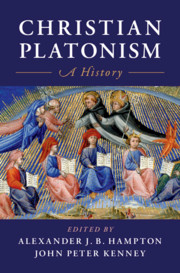Book contents
- Christian Platonism
- Christian Platonism
- Copyright page
- Dedication
- Contents
- Figures
- Contributors
- Acknowledgements
- I Concepts
- 1.1 The Perennial Value of Platonism
- 1.2 The Ideas as Thoughts of God
- 1.3 The One and the Trinity
- 1.4 Creation, Begetting, Desire, and Re-Creation
- 1.5 The Concept of Theology
- 1.6 Participation: Aquinas and His Neoplatonic Sources
- II History
- III Engagements
- Index
- References
1.1 - The Perennial Value of Platonism
from I - Concepts
Published online by Cambridge University Press: 20 January 2021
- Christian Platonism
- Christian Platonism
- Copyright page
- Dedication
- Contents
- Figures
- Contributors
- Acknowledgements
- I Concepts
- 1.1 The Perennial Value of Platonism
- 1.2 The Ideas as Thoughts of God
- 1.3 The One and the Trinity
- 1.4 Creation, Begetting, Desire, and Re-Creation
- 1.5 The Concept of Theology
- 1.6 Participation: Aquinas and His Neoplatonic Sources
- II History
- III Engagements
- Index
- References
Summary
The distinctive features of Plato’s philosophical system are examined, especially his rejection of naturalistic philosophic and scientific approaches and his postulation of an absolutely simple first principle. The Platonists after Plato are then considered, including Aristotle, Alcinous, Numenius, Plotinus, Iamblichus, Proclus. Platonism is conceived as a collaborative project that developed over against opposition – such as Stoicism and, in late antiquity, Christianity – as well through internal debates among its rival schools. The chapter concludes with a discussion of Platonism’s encounter with Christianity after the Edict of Milan.
- Type
- Chapter
- Information
- Christian PlatonismA History, pp. 13 - 33Publisher: Cambridge University PressPrint publication year: 2020
References
- 2
- Cited by

